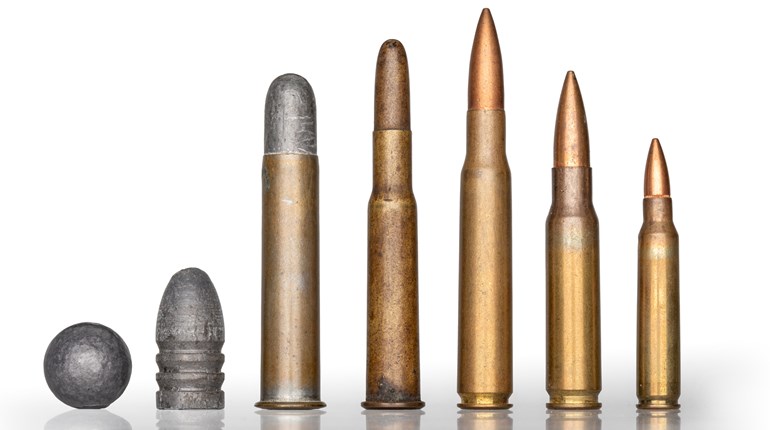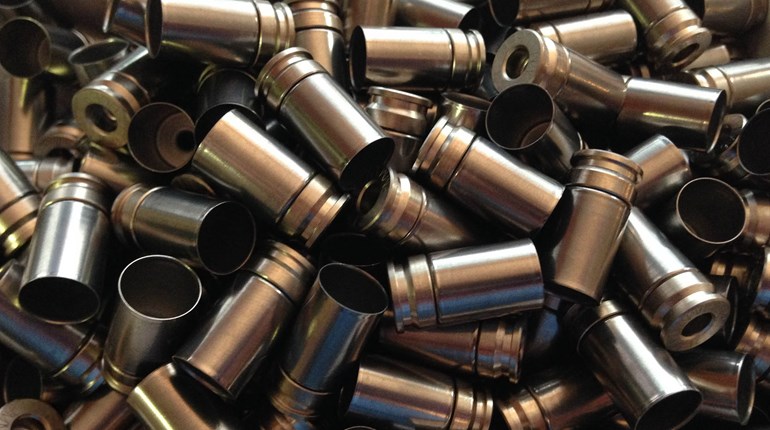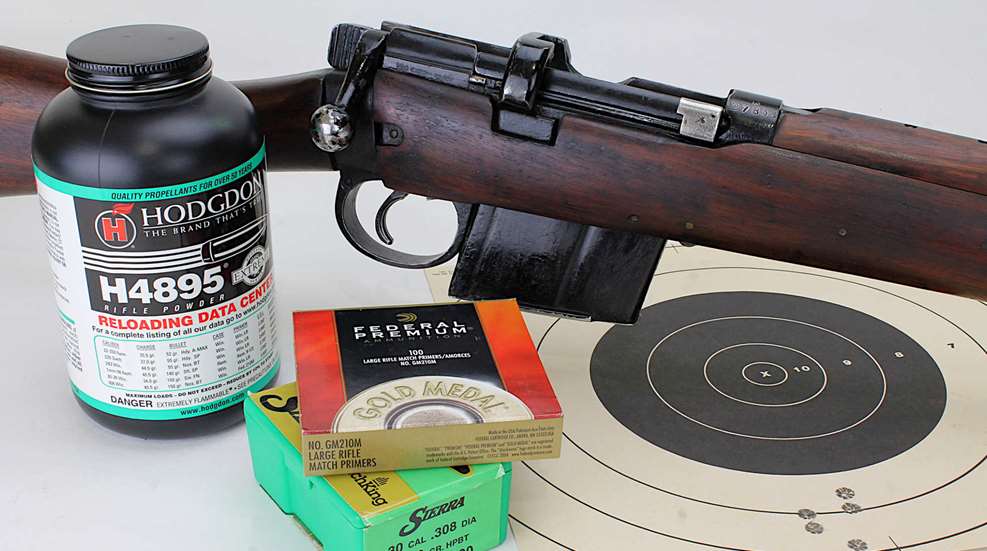
WARNING: All technical data in this publication, especially for handloading, reflect the limited experience of individuals using specific tools, products, equipment and components under specific conditions and circumstances not necessarily reported in the article and over which the National Rifle Association (NRA) has no control. The data has not otherwise been tested or verified by the NRA. The NRA, its agents, officers and employees accept no responsibility for the results obtained by persons using such data and disclaim all liability for any consequential injuries or damages.
A Vintage Military Rifle for competition is a bolt-action rifle that has been in general issue to a nation’s military. The unusual No.1 Enfield rifles made in the 1960s and 1970s at India’s Rifle Factory Ishapore were briefly in general issue and should qualify for VMR competition—but have you ever seen one on the firing line?
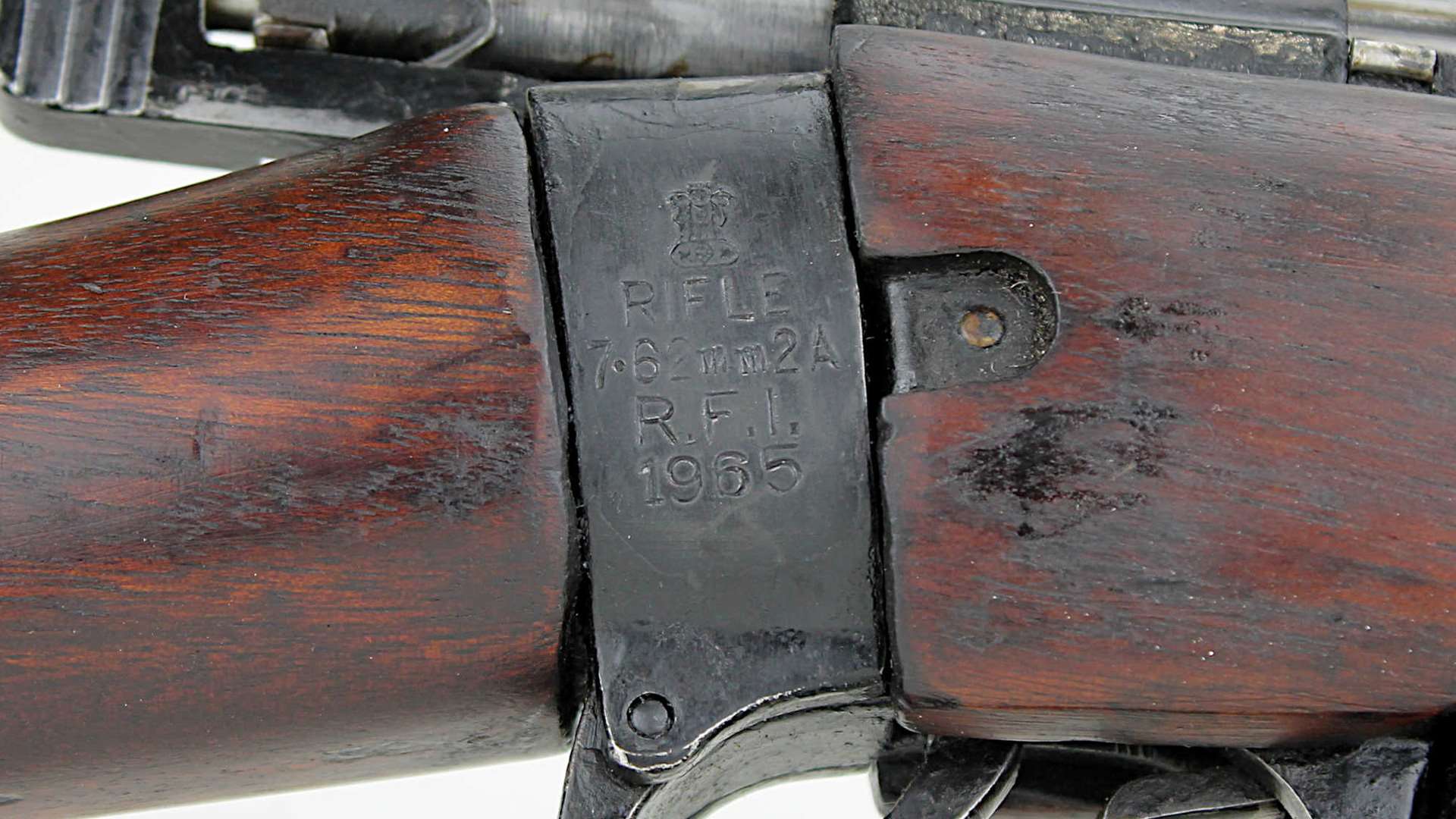
What makes these Ishapore Enfields unusual is not just their late manufacture, but also their chambering, 7.62x51 mm NATO. And therein lies the crux of the matter: though one of the few VMR bolt guns that digests one of the most ubiquitous rounds in rifledom, the 7.62 mm NATO round gives the Indian indigestion, and the .308 Win. adds heartburn.
ALMOST IDENTICAL
Adopted in 1963 and manufactured at India’s Rifle Factory Ishapore, India never intended the “Rifle, 7.62 mm 2A/2A1” for lengthy service—it was a stopgap until the country could fully equip with modern L1A1 select-fire rifles (also manufactured by Rifle Factory Ishapore) firing the 7.62 mm NATO round. A child of the late 19th century, Great Britain originally adopted the Short Magazine Lee Enfield (SMLE) rifle into British service in 1902. As Britain ruled India from 1858 to 1947, it’s natural that India would equip with British service arms, and the Rifle Factory Ishapore manufactured about 600,000 No.1 Enfields through World War II. Indian riflemen were still carrying Enfield No.1 Mark III* rifles until transitioning to the nearly identical Rifle, 7.62 mm 2A/2A1. Ishapore manufactured about a quarter-million 2A/2A1 rifles before ceasing production in 1974; today shooters and collectors refer to the rifle as an “Ishapore Enfield,” and sometimes simply “Ishy.”
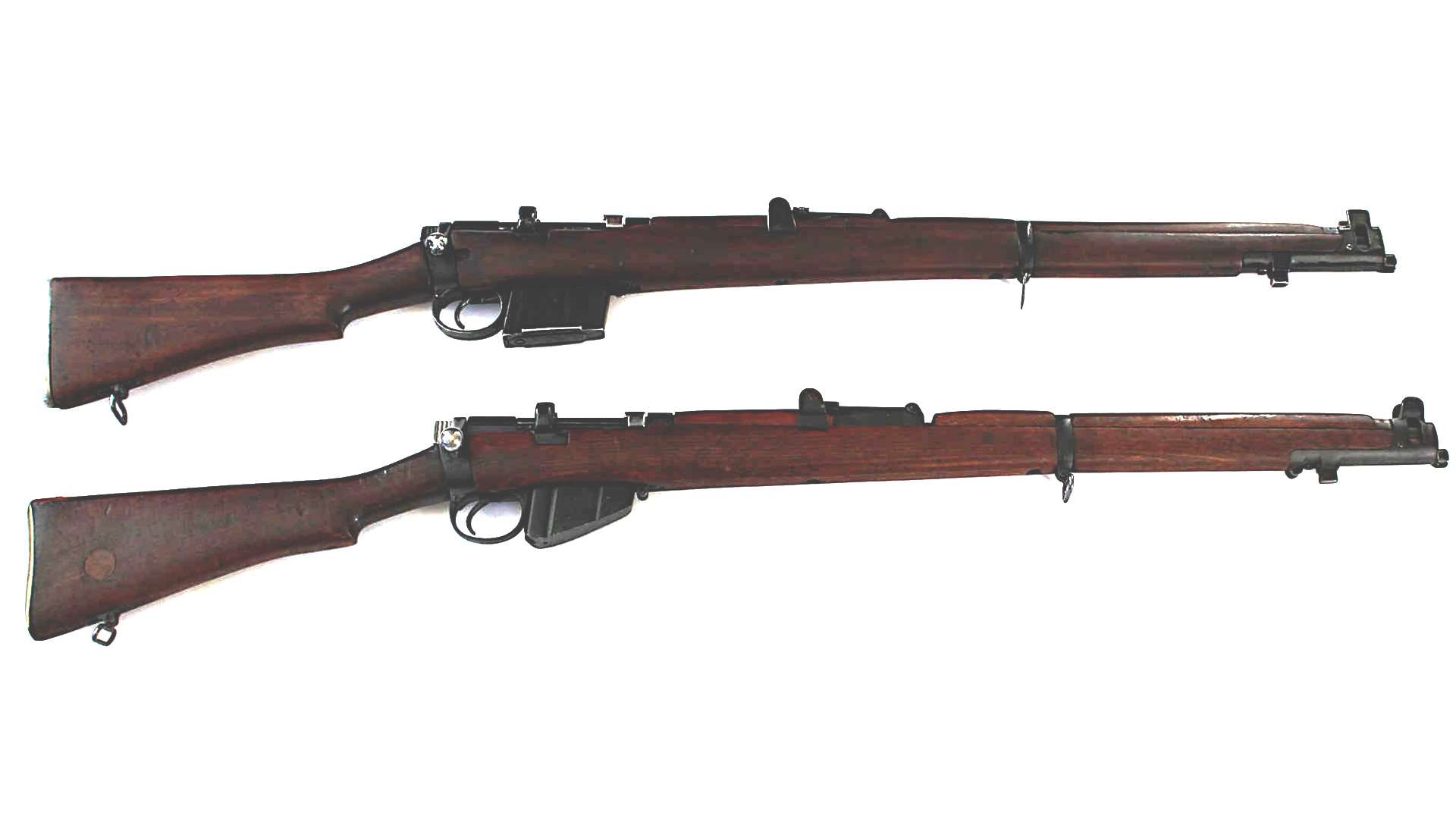
Most obvious among the visible differences between the Indian Ishapore Enfield and a British No.1 Mark III* that I have on hand are the butt plates, the shape of the box magazine, and a lateral stock reinforcing bolt and protective black paint on the Indian’s metal parts. The Ishapore extractor, of course, differs to accommodate the rimless 7.62 mm NATO cartridge. The 2A version has the No.1 Mark III* Enfield’s rear sight graduated out to 2,000 meters, the 2A1 rear sight to only 800 meters. The rear sight on this Ishapore identifies it as the 2A model, as does the receiver mark. Stripping the paint obscuring the receiver markings revealed a logo of India’s government, “Rifle 7.62 mm 2A R.F.I.” and the manufacture date, 1965.
BINDING BOLTS
Other military bolt guns have been successfully converted to 7.62 mm NATO (which importers have fudged a bit in advertising them as “.308 Win.”). After World War II, for example, the Israelis re-barreled 98k Mausers to the NATO cartridge for its armed forces, and I once owned a Spanish Model 1916 Mauser similarly converted to 7.62 mm NATO. While one might think that building brand new Enfield No.1 rifles to fire the cartridge would pose no problems, it did have a serious complication.
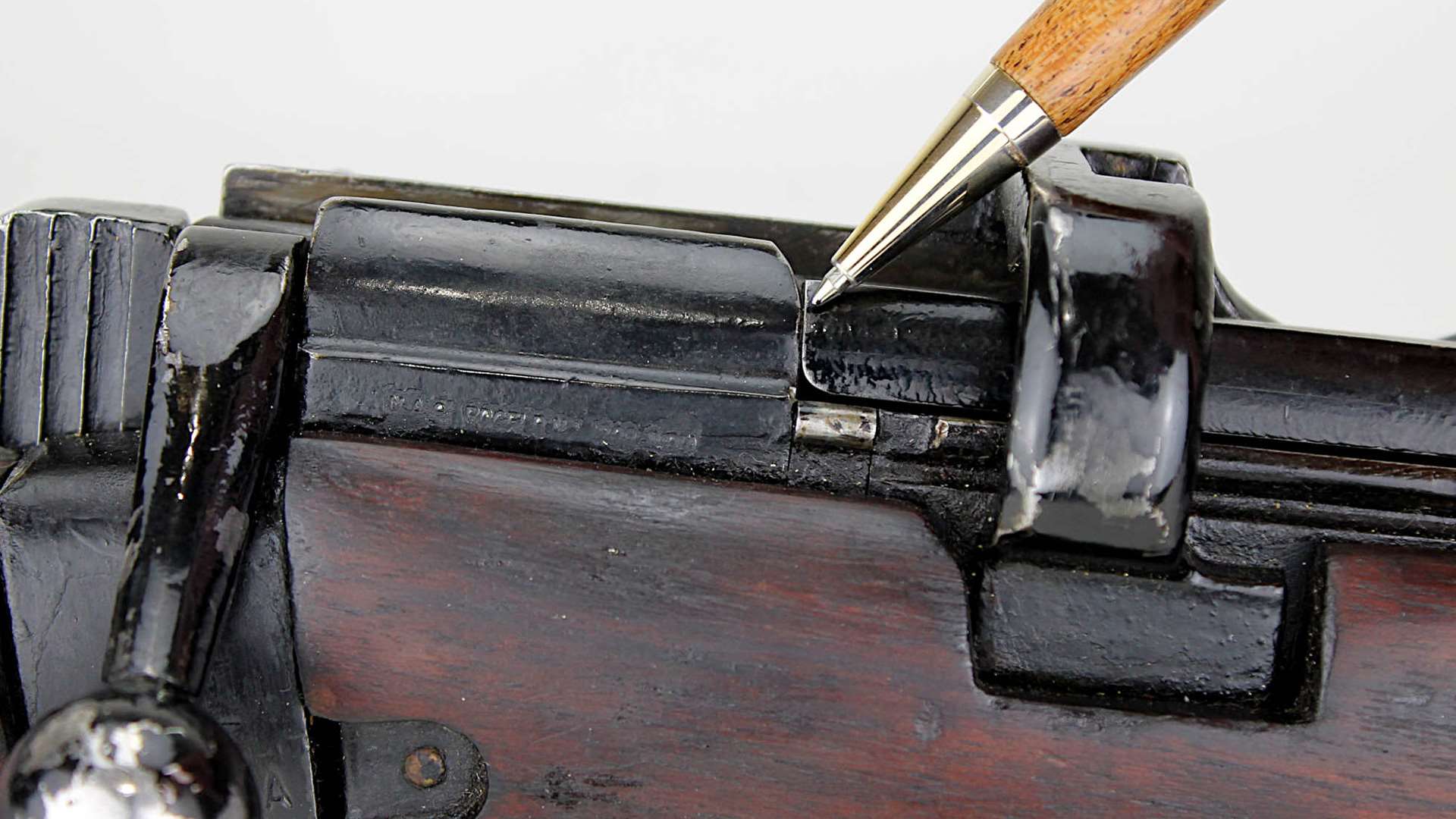
I bought two of the Ishapore Enfields in the late 1990s; they were advertised as .308 Win., though of course they are technically chambered in 7.62 mm NATO. However, I found neither cartridge, which are identical in outside dimensions, to offer acceptable performance in the rifles—rather surprising for a combat rifle that should be able to digest both without a hiccup. Both rifles suffered from stiff bolt lift (as in rapping the bolt handle with a rawhide mallet to force it to lift) and difficult extraction when firing .308 Win. ammunition, and even with 7.62 mm NATO ammo the bolt lift was remarkably stubborn. The brace of Ishapores seemed essentially useless. What’s the story?
Ishapore made their 7.62 mm 2A/2A1 receiver of a stronger steel than that used in the British No.1 Enfield to handle the higher pressure of the 7.62 mm NATO cartridge, but because the bolt and receiver were designed for the .303 British cartridge pressure of about 49,000 p.s.i., it is still not suitable for the higher pressures of 7.62 mm NATO (about 60,000 p.s.i.) or .308 Win. (about 62,000 p.s.i.) rounds, stronger steel notwithstanding. Modern bolt-action rifles firing the 7.62 mm NATO and .308 Win. cartridges have bolts with at least two locking lugs at the front; the No. 1 Enfield rifles have a single locking lug at the rear of the bolt, and here’s what is happening with the Ishapore. With the locking lug at the rear of the bolt, bolt thrust from the cartridge causes the bolt to flex slightly upon firing, allowing the fired case to overexpand and press backward against the bolt before it unflexes, binding the locking lug hard against the receiver bridge when it does unflex. The result—difficult bolt handle lift.
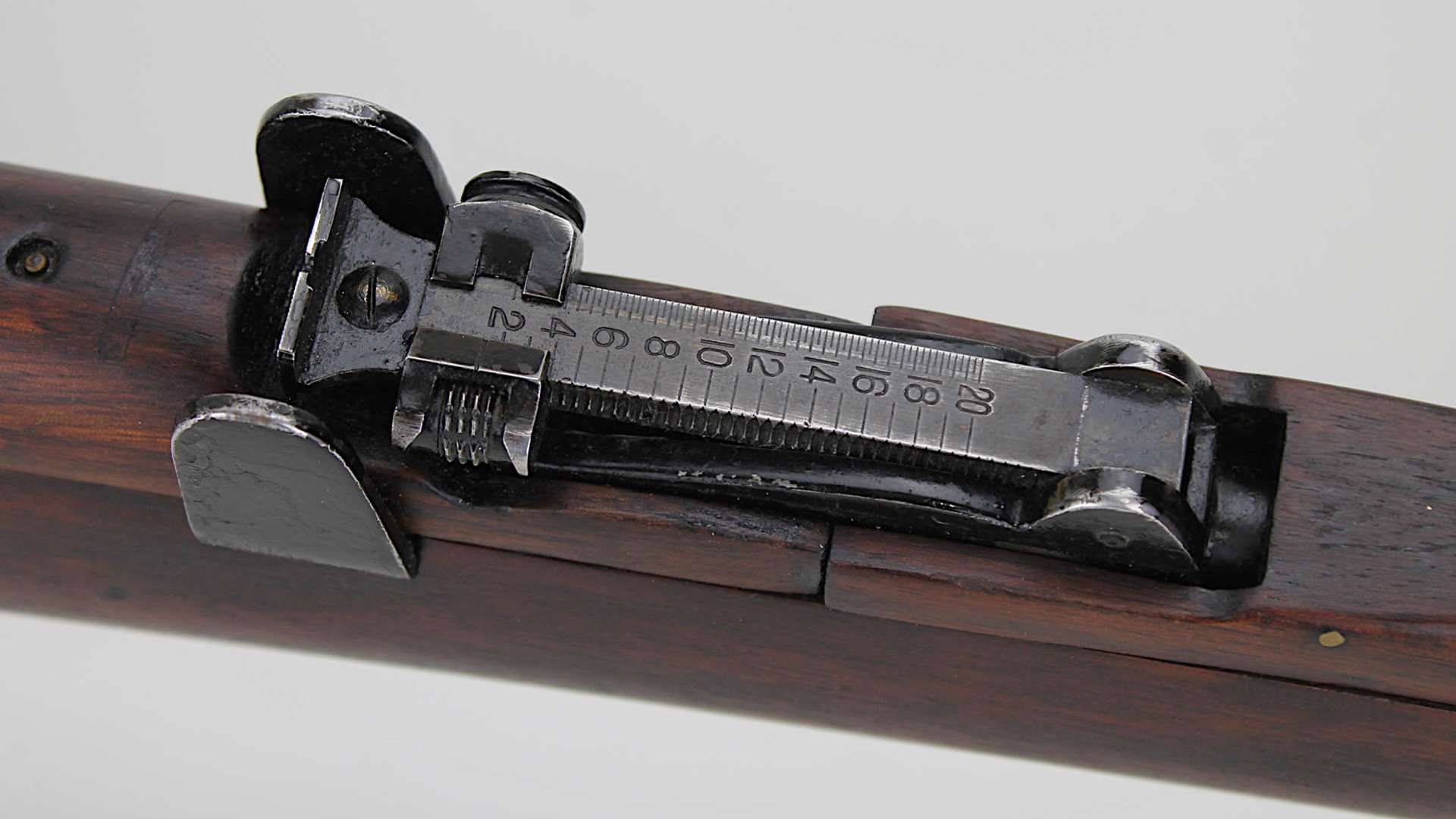
A question to baffle the practical shooter is, “How could the Indian military expect to fight with rifles that bind their bolts when fired?” The answer may lie in the ammo India appears to have utilized in its Ishapore Enfields. I have no Indian-manufactured 7.62 mm NATO ammunition on hand to examine myself, but I found reference to the Indian version being loaded to a lower pressure. How that could be so and yet still be NATO compliant, I couldn’t say, but consider that although Britain is a NATO member, India is not, and so India’s 7.62 mm NATO ammunition intended for the stopgap 2A/2A1 likely wasn’t fully NATO compliant and NATO nations knew that.
60 PERCENT RULE
Regardless, for VMR competition the only ammunition rules compliance is that it be safe to use in the intended rifle. To that end, and because VMR competition is fired at a relatively short 200 yards (or at 100 yards on NRA-reduced targets), reduced-power 7.62 mm NATO and .308 Win. loads in the Ishapore Enfield is the way to go. While this may be accomplished with cast bullets and pistol powder loads, most handloaders are not bullet casters or skilled at safely using pistol powders in rifle cartridges. While a handloader could start with published minimum .308 Win. jacketed bullet loads and hope for the best—indeed, some minimum powder charges produce about the same 49,000 p.s.i. of the .303 British cartridge for which the No.1 Enfield was designed—Hodgdon’s “60 percent rule” for its H4895 powder is ideal for tailoring comparatively low-pressure 7.62 mm NATO ammo for the Ishapore.
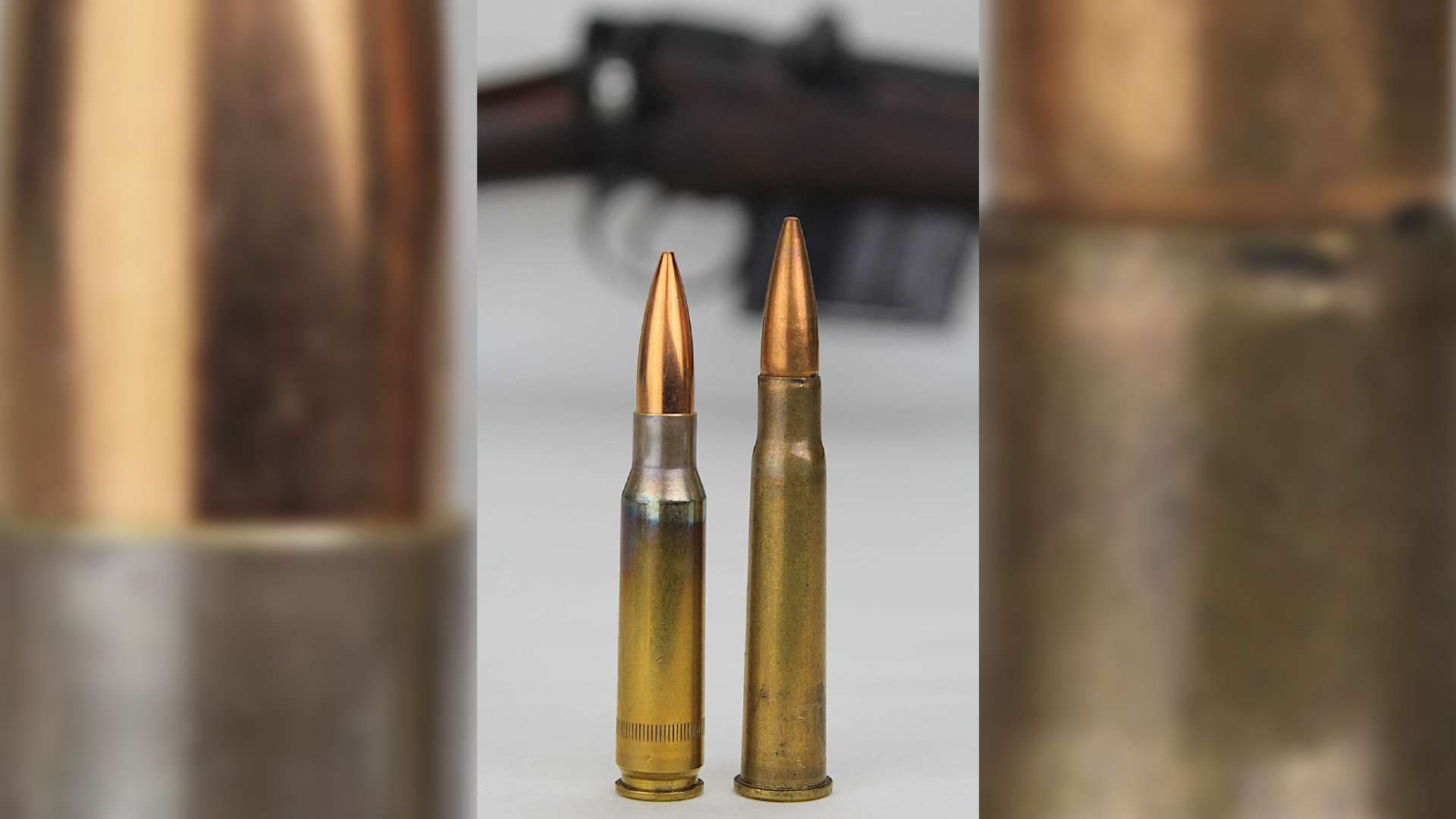
Hodgdon’s “60 percent rule” is to note the maximum charge of H4895 powder listed for a cartridge and bullet combination in Hodgdon’s load data and multiply it by 0.6 (60 percent). The result is the minimum starting charge of H4895 with the listed bullet. Hodgdon says the resulting minimum charge can be reduced another 10 percent, but no less than that. Hodgdon developed this rule specifically for H4895 because it is the slowest rifle powder to uniformly ignite in reduced loads. Hodgdon’s “60 percent rule” does not apply to any other powder, including IMR 4895, and it is potentially dangerous to attempt substitution.
Hodgdon’s load data for .308 Win. and H4895 list two 150-grain bullets, which are heavy enough for short-range VMR duty, and I applied the data to Sierra’s .308 150-grain MatchKing. Hodgdon’s maximum listed charge of H4895 for the .308 Win. and 150-grain bullets is 45.6 grains, and utilizes Federal 210M Match primers. Multiplying 45.6 grains by 0.6 results in 27.4 grains of H4895 as the reduced load starting charge. Another 10 percent reduction results in 24.6 grains of H4895 as the absolute minimum charge.
Given that I have plenty of already matchprepped Lake City Match ‘85 7.62 mm NATO brass leftover from my M14-shooting High Power days, I paired it with the Sierra Match- King bullet. Loading match ammo for 200- yard competition with an unaccurized combat rifle seems akin to feeding caviar to a stray cat, but match-grade ammo can halve a battle rifle’s 3-4 MOA groups at VMR competition’s short distances. Indeed, the first test load of three rounds sent 50 yards downrange—25 grains of H4895—clustered all three rounds into a surprisingly tiny 5/8-inch group. How often do we stumble onto a promising load on the first try? More to the point, the fired cases extracted without effort. As a bonus, recoil was light compared to full-power 7.62 mm NATO loads, as to be expected.
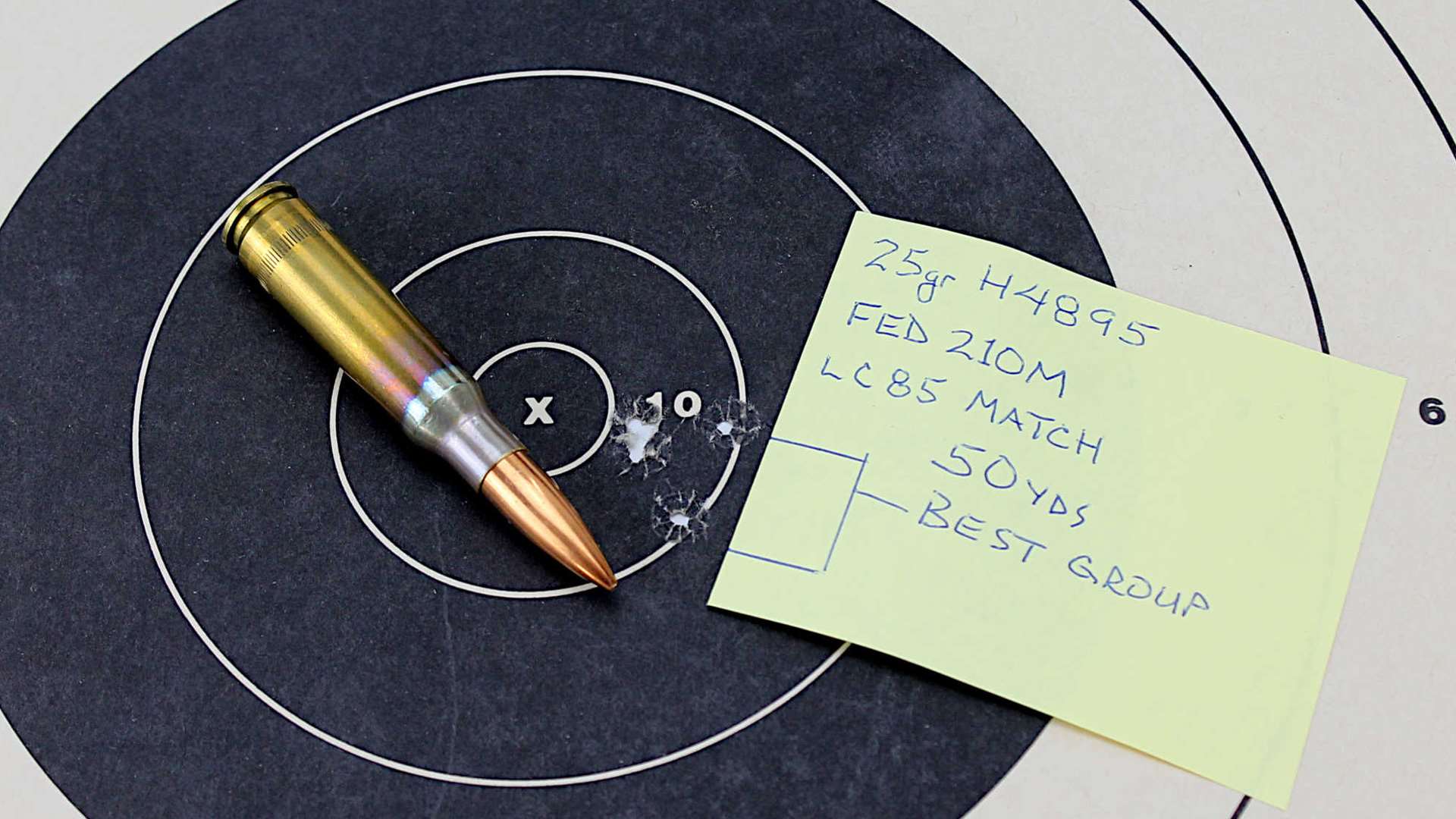
I might have continued increasing powder charges to fine-tune a match load or to determine at what point the rifle’s bolt began to bind, but my supply of H4895 is getting low and powders are still a bit marketscarce. Instead, I shot a few more 25-grain groups to confirm the load’s performance and to demonstrate the applicability of Hodgdon’s 60 percent rule for H4895 to resolve the Ishapore’s indigestion.

Notes: An Ishapore 7.62 mm 2A rifle factory chambered in 7.62x51 mm NATO with a 25-inch barrel (1:12 twist) was used to test Hodgdon’s “60 percent rule.” Cases were Lake City Match ’85, primers Federal 210M. Powders charges were thrown by an electronic scale/trickler with a +/- 0.1 grain accuracy. Forster .308 Win. Bench Rest dies sized cases and seated bullets. Accuracy is the average of four groups. Velocities are the average of five rounds chronographed at 10 feet.
HANDLOADERS ONLY
VMR competition’s purpose is to get the average shooter out to the range. While most shooters use milsurp or new factory ammo, the Ishapore Enfield is among those rifles solely within the ken of handloaders, which can explain why you may never have seen one at a match. On the other hand, because it appears to the casual glance identical to the British No.1 Mark III* Enfield, maybe you have seen one and didn’t know it.
The Rifle, 7.62 mm 2A/2A1 Ishapore Enfield is more historical curiosity than historically significant, but history is also a part of the Vintage Military Rifle games, and with safe loads, that’s reason enough for the “Ishy” to have a place on the firing line.














